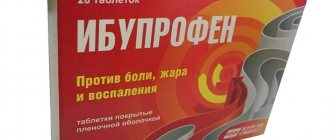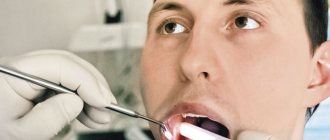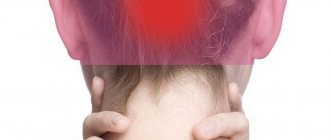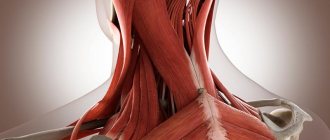- Acupuncture Quickly relieves inflammation and pain, has an anti-edematous and anti-ischemic effect. The introduction of hair-thin needles reliably eliminates pain attacks.
- Pharmacopuncture Used in combination with acupuncture. This procedure involves the introduction of microdoses of homeopathic medicines, which help achieve the fastest possible analgesic and anti-inflammatory effect.
- Acupressure Improves local blood circulation, eliminates spasms of facial muscles, relieves emotional and muscle tension, improves metabolic processes.
- Moxotherapy on bioactive points of the body has a general strengthening effect, improves immunity, and activates the body's protective and regenerative processes.
- Herbal medicine Ideally complements the effects of procedures and consolidates their results, has a sedative effect, improves blood supply to nerve tissue.
Trigeminal neuralgia in Eastern medicine
With regard to trigeminal neuralgia, as with all other diseases, oriental medicine takes a comprehensive approach.
If Western medicine does not go beyond the immediate causes of nerve damage - compression by edema, hypothermia, viral infection, unsuccessful dental treatment or other obvious factors, then Eastern medicine finds and eliminates the root cause of the disease.
Trigeminal neuralgia, like all neuralgia and neuritis, refers to disorders of the Rlung (Wind) regulatory system. This system is responsible for mental activity, psycho-emotional state and nervous regulation of the body. The main reasons why Wind diseases occur are stress, negative emotions, hypothermia, lack of nutrition, sleep, and overwork. It would seem, what is the connection between the trigeminal nerve and the emotional state? However, it exists, and medical science confirms it.
According to official statistics, in 20% of cases, trigeminal neuralgia occurs against a background of negative emotions. In reality, this percentage is much higher if we take into account the long-term consequences of nervous stress, mental trauma, and emotional overload.
Neuralgia is often accompanied by depression and neuroses. Combined with strong cold winds and hypothermia of the face, this is likely to produce symptoms of trigeminal neuralgia.
The question arises: is it enough to simply relieve pain, reduce swelling of soft tissues, and restore normal blood supply to the nerve in order to consider the problem solved? Or does the treatment of trigeminal neuralgia require the same comprehensive approach as the treatment of nervous disorders? Eastern medicine answers this question unequivocally: without restoring the balance of the body, treatment of trigeminal neuralgia cannot be truly effective, successful, and its results cannot be long-lasting and lasting. Only by eliminating all the causes of the disease can the problem of neuralgia be solved so that the patient forgets about it for a long time or forever.
That is why treatment of trigeminal neuralgia at the ITVM clinic includes not only the use of medical procedures - acupuncture, acupressure and others, but also a course of herbal medicine. Tibetan herbal remedies used for neuralgia normalize the psycho-emotional state, increase resistance to stress, improve sleep, help overcome depression, neurosis and have a general strengthening effect. In addition, “ITVM” performs acupuncture on the bioactive points of the body’s meridians in order to restore normal circulation of vital energy and thereby eliminate its overexpenditure, which leads to exhaustion of the nervous system.
The journey of the virus in the body
The source of HSV infection is a patient or a virus carrier (there are no external manifestations of the disease, but the virus is excreted in saliva, urine, and discharge from the genitourinary system). The virus is transmitted by contact, airborne droplets, blood transfusions and organ transplants. During pregnancy, infection of the fetus can occur transplacentally (through the placenta) and during childbirth.
It has been established that in 40% of cases, primary HSV infection occurs by airborne droplets in early childhood, and the source of infection, as a rule, is family members who have active signs of herpes infection (usually recurrent herpes of the lips). The herpes simplex virus enters the body through injured skin or mucous membranes (red border of the lips, mucous membranes of the mouth, genitals, conjunctiva) - where typical blistering rashes appear (the result of the activity of the virus), and penetrates the bloodstream and lymphatic system. Viral particles reach the nerve nodes (ganglia) of the central nervous system, where they remain inactive for life. For example, with herpes of the face, the virus is stored in the ganglia of the trigeminal nerve, and with herpes of the genitals - in the ganglia of the lumbosacral spine. From the nerve ganglia, viral particles begin to move to the periphery - the skin, mucous membranes, and a focus of infection develops during a relapse.
Under certain conditions, HSV multiplies in lymphocytes (blood cells), which leads to their damage and disruption of the genetic mechanisms that control immune responses. Clinically, this manifests itself in frequent colds, decreased performance, weakness, increased body temperature, and enlarged lymph nodes.
A recurrent course of the disease is observed in 17-50% of the population infected with HSV. Exacerbations of herpes occur after various provoking factors: hypothermia, mental or physical trauma (dental, gynecological medical procedures), alcohol intake, against the background of hormonal surges (“menstrual herpes”). “Solar herpes” is known, which appears under the influence of ultraviolet rays.
However, it is worth noting that the herpes virus may never manifest itself as a disease during a person’s life.
Atypical symptoms of trigeminal neuralgia
Trigeminal neuralgia usually manifests itself as an acute attack of pain affecting the right or left (less often) half of the face.
There are also atypical signs of this disease. In particular, trigeminal neuralgia can manifest as pain in the base of the tongue, throat, ear, or sore throat from cold or sour foods. This is the so-called pharyngeal form of trigeminal neuralgia.
If the cause of neuralgia is a herpes virus infection, the symptoms may also be atypical - headache and itching, the appearance of white areas on the skin. The pain may not be paroxysmal, but constant, moderate in nature. In general, any form of the disease in which pain does not occur in attacks, but is constant (pulsating, aching) and accompanied by a burning sensation, is called trigeminal neuralgia type 2, or atypical neuralgia.
When diagnosing the disease, trigeminal neuralgia should be differentiated from symptoms of multiple sclerosis.
With multiple sclerosis, short-term painful attacks covering half the face are also possible, but other symptoms are also present - severe sweating of the forehead, lacrimation, tremors (shaking hands), unilateral blurred vision, dizziness, poor coordination of movements and a number of other neurological symptoms.
Many-sided, insidious
The properties of HSV are such that almost all human organs can be involved in the infectious process, which allows us to speak of herpes as a “herpetic disease” with a predominant lesion of one or another organ system. For example, the eyes, ENT organs (pharynx, larynx, ear), lungs, genitals, gastrointestinal tract, central nervous system (meninges, nerves), skin and mucous membranes (face, lips, oral mucosa) may be affected. ) etc.
The frequency and intensity of exacerbations of recurrent herpes depend on the activity (aggressiveness) of the pathogen, as well as on the resistance of the human body.
Exacerbations of herpes infection are not always accompanied by the appearance of typical rashes in the form of blisters. The insidiousness of herpes lies in the fact that very often a person, without knowing it, becomes a source of infection for others. This applies to both facial herpes and genital herpes, which often manifests itself only in severe pain (in the facial area or in the pelvis, respectively).
When herpes worsens (when rashes appear), the patient becomes acutely contagious. Kissing a loved one or relative during an exacerbation can lead to the appearance of herpes in a previously healthy person. In addition, under unfavorable circumstances and failure to comply with personal hygiene rules, conditions for self-infection may arise. Thus, the virus can be carried from a lesion on the lips by hands into the eyes and genitals. In the presence of microtraumas in these areas, new foci of the disease arise: ocular herpes or genital herpes.
Genital herpes
Genital herpes (GG) is one of the most common infections of the genitourinary system, most often caused by HSV-11. Infection occurs through close physical contact with a patient or virus carrier during genital, oral-genital, genitorectal and oral-anal contact. There are primary and recurrent genital herpes.
With primary genital herpes, the incubation period (the period from infection to the appearance of the first symptoms of infection) is 1-10 days and differs from subsequent relapses in a more severe and prolonged course. Clinical symptoms of primary HH develop in only 10% of infected people and are characterized by the appearance on the mucous membranes of the genital organs and adjacent areas of the skin of single erosions or grouped small blisters filled with liquid, with redness around them. After 2-4 days, the contents of the blisters become cloudy, and they burst, forming weeping ulcers, which then heal. Subjectively, patients are bothered by itching, burning, and pain in the affected area. Some patients experience an increase in body temperature up to 38°C and a painful enlargement of the inguinal lymph nodes. If the course of the disease is favorable, after 5-7 days the crusts disappear and a stain remains in their place. Even without treatment, symptoms usually go away on their own within 2-3 weeks. Subsequently, for many, the disease recurs, and the time until the next relapse can range from several weeks to several years.
Recurrent genital herpes is characterized by a chronic course, disruption of the patient’s sexual and reproductive functions. The disease is difficult to treat. Herpetic rashes can appear on the labia majora and minora, vaginal mucosa, cervix, and perineum. The duration of the rash does not exceed 3-5 days. In some cases, during a relapse, visible rashes are not detected at all, but swelling, itching, and a feeling of discomfort in the genital area appear. The disease may be accompanied by fever, general weakness and malaise, enlargement and tenderness of the inguinal lymph nodes (usually on one side).
A feature of genital herpes is multifocality: the pathological process often involves the lower part of the urethra (urethra, bladder, which is manifested by pain and pain at the beginning of urination, frequent urination) and the mucous membrane of the rectum (recurrent cracks occur), as well as the upper parts of the genital tract (uterus, ovaries and fallopian tubes). In the latter case, the appearance of mucous discharge from the vagina, periodic pain in the pelvis, in the area of the projection of the uterus, ovaries (symptoms of irritation of the pelvic nerve plexus) are possible. Moreover, these symptoms are often associated with a certain phase of the menstrual cycle (with ovulation or the perimenstrual period). It is not uncommon that the viral nature of the disease is not recognized, and patients are treated for a long time by gynecologists with antibacterial and antifungal drugs to no avail.
Treatment of trigeminal neuralgia at home
To relieve pain from trigeminal neuralgia, traditional medicine uses warming - compresses of hot salt or heated buckwheat, a hot hard-boiled egg. Such products must be used with great caution, since exposure to heat can aggravate the inflammatory process. There is also an opposite folk method of treatment - “freezing” the affected area with a piece of ice.
Another folk remedy is fir oil, which is rubbed into the affected half of the face and has a warming effect. In the same way, lavender oil, star balm, garlic oil, radish juice, alcohol tincture of propolis, grated horseradish, tincture of birch buds with vodka and other external remedies are used.
To relieve the symptoms of trigeminal neuralgia, folk medicine uses herbal preparations with calming, sedative and anticonvulsant effects from mint, chamomile, thyme, yarrow and other medicinal herbs.
It should be emphasized that with all the variety of traditional medicine recipes, they only help relieve pain, but are not a means of treating trigeminal neuralgia. They can be used to tide you over for a while before a visit to the doctor, but not as a substitute for such a visit.
Diagnostics
If you suspect the presence of herpes simplex, you should not self-medicate. It is urgent, without delay or masking the rash, to come to an appointment with a dermatovenerologist. A carefully collected anamnesis (questioning of the patient) is important for establishing the correct diagnosis. Herpes, regardless of the location of the pathological process, is characterized by a wave-like course, when painful states are replaced by periods of well-being, even without treatment. The presence of blistering rashes on the skin and mucous membranes, severe subjective symptoms (itching, burning) allows doctors to visually diagnose herpes simplex, prescribe treatment in a timely manner and inform the patient about the danger of infecting a sexual partner.
Only laboratory research methods, which are fundamentally divided into two groups, can reliably confirm the herpetic nature of the disease in the absence of typical manifestations on the skin and mucous membranes:
- isolation and identification of HSV from infected material (material for analysis are scrapings from the lesion, blood, urine, saliva, tear fluid, cerebrospinal fluid, discharge of the cervical canal, vagina, urethra, rectum);
- detection of specific antibodies (protective proteins) to the herpes virus in blood serum - serodiagnosis.
Prevention of trigeminal neuralgia
Strengthening the immune system is often recommended as a means of preventing trigeminal neuralgia. However, this advice is too general, and in general is not very suitable for this neuralgia, which is almost never directly associated with reduced immunity. Of course, there is nothing wrong with strengthening your immune system, but your main focus should be elsewhere. From the point of view of Eastern medicine, trigeminal neuralgia is a disease of the Wind.
For the prevention of such diseases, the main importance is the quality of sleep, proper work and rest schedule, good nutrition, avoidance of stress and overwork.
This means that the diet must be complete, contain a sufficient amount of vitamins B, C, A, D and E, fats (including not only vegetable, but also animal fats, for example, butter, and even better, ghee). It is necessary to get enough rest, get enough sleep, monitor your mood, avoid negative emotions and depression. And of course, you need to avoid cold winds and drafts.
For symptoms of neurosis and other nervous disorders, you should undergo a preventive course of herbal medicine. If there are serious signs of a nervous system disorder, it is better to immediately undergo a full treatment course of acupuncture, massage, herbal remedies and other methods of oriental medicine. This will help avoid not only trigeminal neuralgia, but also other neurogenic pain syndromes.
Complications of genital herpes
Complications of genital herpes include dryness and the formation of painful bleeding cracks on the mucous membranes of the external genitalia, which occurs due to mechanical stress (for example, during sexual intercourse).
A special place among other complications is occupied by pain syndrome caused by specific herpetic neuralgia of the pelvic nerve plexus. In this case, women complain of periodically occurring nagging pain in the lower abdomen, in the area of the projection of the ovaries, radiating to the lumbar region and rectum, pain in the perineum. Pain with recurrent herpes can occur regardless of the presence of skin rashes, which greatly complicates diagnosis. Recurrent genital herpes, disrupting the normal sex life of patients, often causes neuropsychiatric disorders and leads to conflicts in the family.
Genital herpes in some women causes miscarriage and infertility.
Serodiagnosis
Antibodies to the herpes virus appear in the blood serum by 4-7 days after the initial infection, reach a peak after 2-3 weeks and can persist throughout life. The diagnosis is made by the characteristic increase in antibodies and determination of their class. For example, the detection of a certain level of immunoglobulin M (antibodies) indicates a primary infection of a person or an exacerbation of herpes. The detection of a certain level of immunoglobulin G indicates that the human body has encountered the virus and has developed antibodies - the person is infected, but not infectious to others. The result is known the next day. The analysis can be repeated at intervals of several days.
Isolation and identification of HSV
In specialized virology laboratories, HSV is isolated using the culture method. Its essence lies in the fact that the material for research (the contents of herpetic eruptions, human secretions) is placed on specially grown cells in which the virus begins to multiply. Then, after 5 days, the presence of HSV is determined by characteristic changes. Thus, we can say for sure that this disease is of a herpetic nature.
To identify the causative agent of HSV, the polymerase chain reaction (PCR) method is widely used, which makes it possible to find out what type of herpes virus is present in the body. The material for research is taken with a special brush from the rash sites. The PNR method is highly sensitive and is performed within 24–48 hours.









